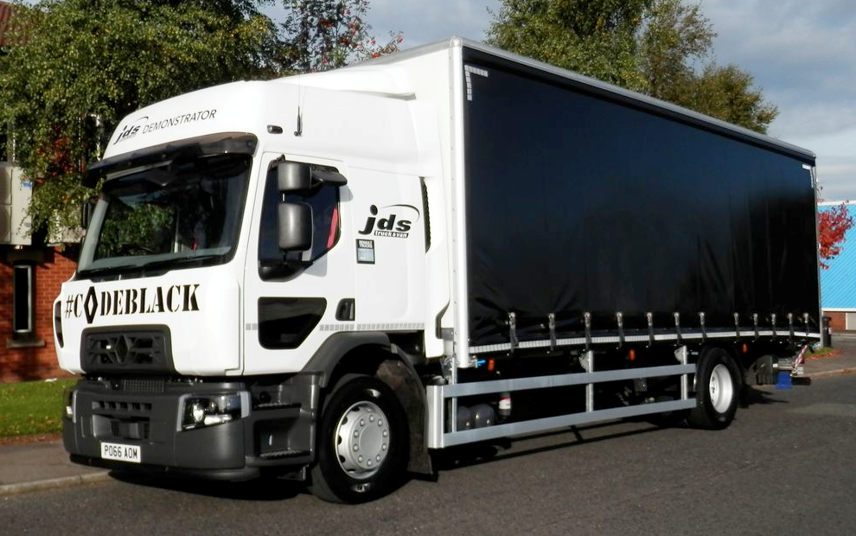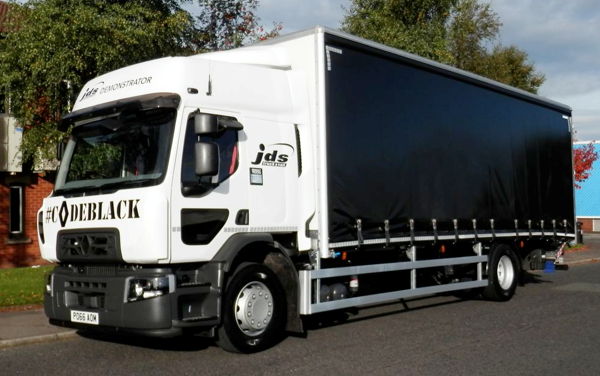Review
As many people will be aware, Renault Trucks has managed to achieve something most truck manufacturers would consider impossible – over the past three years or so it has managed to replace its whole line-up from light to heavies.
Not only did the company achieve this, it also managed to fit in two distribution (Range D) models and two construction models (Range C and K). Regular readers may remember a few months back we tested one of the distribution models but this was the smaller 7.5-tonne GVW with the 2.1m wide cab.
This month’s road test looks at its larger 18-tonne GVW ‘cousin’ featuring the slightly wider 2.3m cab which sits higher on the chassis and features a set of higher powered engines.
The range on the wider cab model is not as comprehensive as the more lightweight version. There’s an 18-tonne GVW rigid 4x2, a 26-tonne GVW 6x2 as well as a 4x2 tractor model operating at a maximum of 40-tonne GCW.
Unlike many of its competitors there is only one 7.7-litre engine available although the six cylinder in-line has three power settings at 250PS and 950Nm of torque, 280PS and 1050Nm of torque and, finally, the top of the range 320PS with 1200Nm of torque.
Matched to the three engine powers are a set of ZF gearboxes including a six- or nine-speed manual or a 12 automated ‘Optidriver’ (a six-speed Allison automatic is also available, but for specialist use). Each is available on all engine powers.
The six-speed Optitronic automated gearbox systematically engages the best gear ratio on the basis of the load, gradient, drivetrain power mapping and requests for acceleration, retardation and braking. It apparently can help reduce fuel consumption by up to 7% on average as well reduce operating costs. The clutch and the mechanical gearbox components are protected and their service life is optimised.
To say the chassis wheelbases are comprehensive is an understatement, with 14 alternatives on the 4x2 axle configuration from 3.5m to 6.8m, and with two fewer on the 6x2.
As for suspension, the 18-tonner has leaf springs on the front and rear axle with the option to have air on both and these are supplemented by shock absorbers and anti-roll bars.
Braking on Range D starts with a 120kW exhaust brake which is standard. As an option the Optibrake exhaust retarder is integral to the engine and has around 40% greater braking power. An electric retarder provides further effective braking power stepping up the power to 480kW and 620kW although ZF also has an alternative solutions via a hydraulic retarder rated at 420kW.
Of course there is the normal array of electronic braking systems assisting the all-round disc brakes, such as emergency brake assist and hill-start braking.
There are four cab variants on the wider 2.3m version, starting with a standard day cab, then a global cab running at 2m deep, moving up to the night and day cab just slightly deeper at 2.2m. The top of the range is the sleeper cab which is as deep as the night/day cab but is around 0.45m (18 inches in old money) higher at 2.067m.
At the front is a three-part bumper and its features integrated daytime running lights and a front grille offering quick access for checking essential levels. The cab is mounted either on four-point mechanical suspension or, as an option, a four-point airbag system.
Opening the cab door presents the driver with a couple of steps to gain access to the cab floor and a suspended driver’s seat. Ahead of the driver is the instrument panel with a large speedometer at the centre flanked to the right by a large 4.3-inch digital display and to the left three gauges for fuel, temperature and DPF condition. Running along the total width of the panel is a battery of warning lights for all the electronically-controlled features and systems.
The whole dashboard is very tight around the driver, which is not a criticism; I like this and it’s exactly what’s required in a distribution truck with everything to hand. The left bank has two rows of switches, a CD player, mp3 Bluetooth audio equipment with USB port and jack connection and, finally, the heating and ventilation rotatory controls.
The windscreen is not as deep as some of its competitors but there’s still good visibility all round which is particularly helped by the excellent addition of a vision panel at the bottom of the passenger side door. There is an option for the driver’s side as well.
At the top of the windscreen there is a camera for the line-crossing warning system and automatic emergency brake control system and the obligatory Class V and Class VI mirrors. It has to be said the controls for the rear view mirrors are difficult to see and, as a consequence, to find. They are hidden by the armrest to the driver’s right.
Once the key is turned, moving forward is simply a matter of turning the stalk on the right hand side of the steering column to ‘D’, releasing the handbrake on the left hand side by the driver’s hip and the truck moves away with help from the 250hp engine.
The sleeper cab is very roomy for an 18-tonne distribution truck and most of the top of the cab above the driver’s head is storage lockers which is just as well given storage lower down is relatively bare.
Cab noise is minimal, helping to produce a nice overall cab environment which is probably helped by the ZF automated gearbox up changing at an ear-friendly 1600rpm dropping around 500rpm per gear.
The two-way adjustable steering wheel offers great feedback from the road and the chassis suspension is stiff enough to remain level even around the sharpest of corners. This was probably helped by the optional four-point cab air suspension on the model we tested.
Moving is one issue but stopping is another and the retarder lever on the left of the steering column provides effective braking pressure in most situations, saving on the use of the service brakes.

















